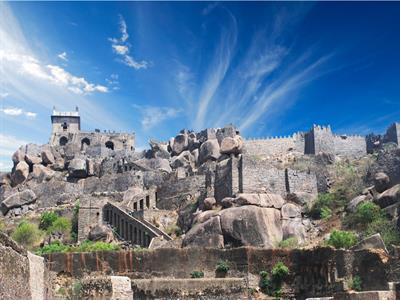
PUMPA - SMART LEARNING
எங்கள் ஆசிரியர்களுடன் 1-ஆன்-1 ஆலோசனை நேரத்தைப் பெறுங்கள். டாப்பர் ஆவதற்கு நாங்கள் பயிற்சி அளிப்போம்
Book Free DemoMuhammad Shah – I
- Muhammad Shah succeeded Alauddin Bahman Shah in the throne of the Bahman Sultanate. Muhammad ruled the kingdom from 1358\ to\ 1375. Most of his tenure went in war fields engaging in battles with the adjacent enemies.
- The Main opposition he faced was from the Vijayanagar empire which was controlling a vast and fertile region in the Southern part of India. The disputes for that fertile region extended over generations.

Tomb of Firdausi
- He took on Vijayanagar two times and gained nothing from the Battle. He made up his mind to take the attack to Warangal, which he succeeded in and amassed huge wealth from the Battle in 1363.
SHAH NAMA: This book was written by Firdausi which also mentions the Turquoise throne and the penchant for this throne among the Persian rulers.
- The Victory over Warangal extended his authority to “Golconda Fort” and the “Turquoise (a semi-precious throne of Sky blue colour) throne” was captured by him, which served as the throne of Bahman Sultans for a long time.
Administration under Muhammad Shah I:
- He followed the governance style of the Maratha kingdom and his administration was mirroring the practices of Delhi Sultans and thus he had established a strong structure of administration among the Bahman sultans.

Golkonda Fort
- He was also credited as the ruler who laid the foundation for a mighty empire. He established separate ministers to deal with the principles of governance. Muhammad also appointed eight ministers to carry on the tenets of governance under his administration.

- He also looked into the safety of his subjects like keeping a check on a robbery on highways and also took other measures to protect the people.
- Muhammad also undertook construction activities during his tenure, he had built a grand mosque in Gulbarga and also constructed many such structures.
GOLCONDA FORT: Earlier known as the “Mankal” among the locals, which was built on top of a hill in the\ 12th\ Century, which was later fortified by the Bahmani Sultans during the 16th\ Century. It is known for its grand inner architecture.
- Patrons from various Arab nations visited during the reign of Muhammad who helped to spread the culture of Islam around the regions of South India.
Successors of Muhammad Shah:
- Post the demise of Muhammad Shah, the throne of Bahmani was handed over to Mujahid Shah, the son of Muhammad. He waged several wars against the Vijayanagar Kingdom and concluded peace in later stages.
- He was assassinated by his uncle Dawood, who reigned as the king of the Bahman empire under the name of Muhammad Shah II.
Muhammad Shah II
Reference:
Tomb of Firdausi - Anna112 / Shutterstock.com